Segment.com – a useful tool in the service of e-commerce analytics
Segment.com is one of the fastest growing tools for the effective collection and management of customer data in e-commerce businesses. How does it work? What opportunities does it give? How to finally use this tool in your business? Find out in this article.
What is a Customer Data Platform?
In the case of e-commerce companies with a business model based on recurring sales, customer acquisition is much more important than acquiring an order. Therefore, one of the most important information that such a business can collect is that about users and customers. Used in an appropriate way, e.g. in marketing campaigns, they allow for better matching of content to users, increasing the effectiveness of the campaign. Therefore, this data gives a significant competitive advantage and often decides about the success or failure of the business.
These businesses use a number of tools to attract and contact users. On average, e-commerce businesses use at least two marketing platforms, the CRM system and Google Analytics. However, there is a problem with fragmentation of collected data. Each tool collects only partial data about users. Each system also gives the user its unique identifier, which is not recognized by another system. These tools do not communicate with each other, which makes any use of information from one to the other very problematic.
This problem was noticed a few years ago and led to the creation of a separate class of tools under the name of the Customer Data Platform (CDP). These tools are aimed at facilitating the collection and then transfer of information about the user / customer between the tools used. Data collected in tool A are sent to the CDP, then transformed there into comprehensible form(maintaining the required structure) for tool B and sent to it via the API interface. All this happens automatically and after correct configuration it does not require additional maintenance.
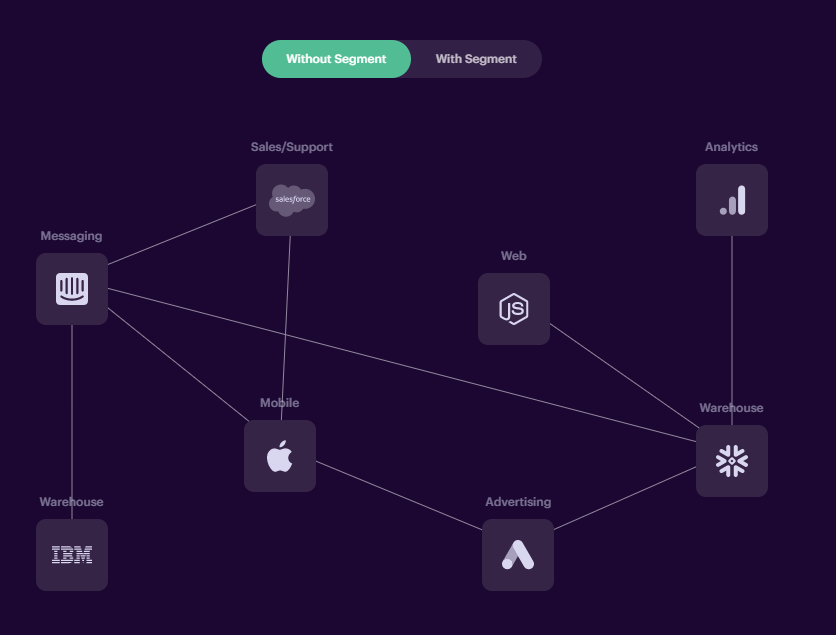
As CDP tools solve the key problem of customer identification for e-commerce businesses, it should come as no surprise that in recent years this class has been one of the fastest growing classes of analytical tools dedicated to e-commerce. One of the leaders in this class of tools and its precursor is Segment.com (hereinafter Segment).
Segment – basic information
Segment, founded in 2011, has become a tool currently valued at $ 1.5 billion and a precursor to the CDP by chance. A side effect of the failed project was a library aimed at developers, enabling easy data integration between several sources. This need was quickly verified by the market and led to the development of the tool in its present shape.
Segment is the central data collection and management center between e-commerce tools. Thanks to its application, e-commerce businesses can use user data from various tools in others in an effective way that minimizes the participation of developers. Until now, if you wanted to collect and transfer data from a website (e.g. to Google Analytics or Facebook Ads), it was necessary to configure a tool like Google Tag Manager. It required cooperation between developers and analysts, but it was possible for most e-commerce businesses. The problem, however, arose when you wanted to send information the other way. For instance, in order to obtain information from Google Analytics (e.g. user segments or remarketing lists) and pass it to Facebook Ads or customer communication tools (CRM – e.g. Braze), it was necessary to manually create connections to the APIs provided by these systems. It required knowledge and time both for implementation and further maintenance (APIs change quite regularly!).
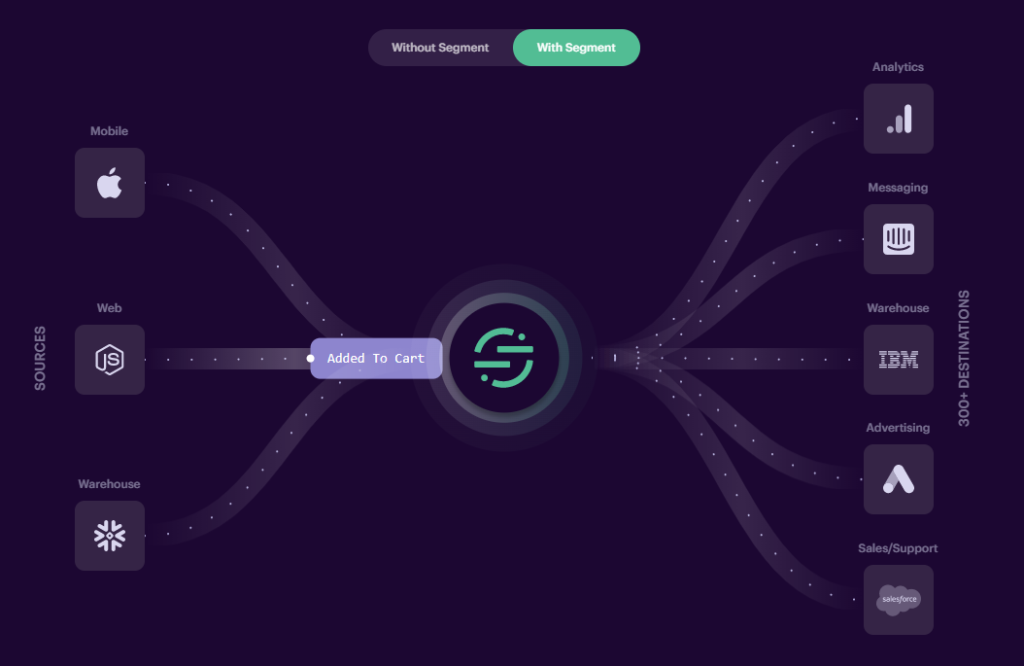
Once configured, Segment allows you to instantly connect with the majority of the most commonly used e-commerce tools, databases (server side) or a website. Adding new sources comes down to easy, non-technical configuration in the panel. Moreover, all collected raw data is optionally saved in the data warehouse (e.g. in BigQuery). As a result, information obtained from, for example, Facebook Ads can be used almost immediately in Braze newsletter communication.
Segment – price and configuration
Segment is a paid tool. It is available in the free version, but this is so limited that it should be treated as an option only to familiarize yourself with the tool. Billing is based on the number of unique users registered in all connected data sources in a given month.

Segment breaks down connected tools into data sources and destinations. At the same time, one tool can be both the source and the destination. Data downloaded from the sources are transformed in Segment and sent to the connected destinations.
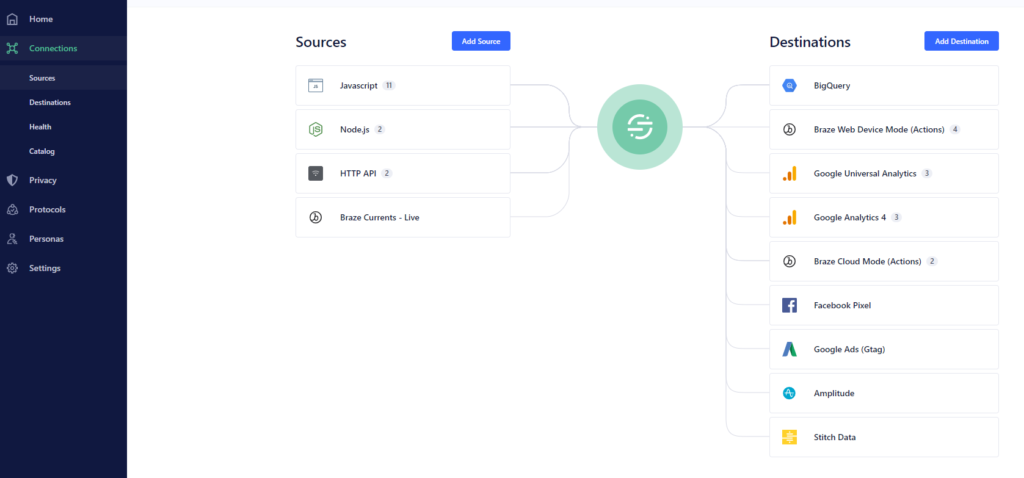
Destination configuration almost always takes place only in the Segment panel. It differs per destination but does not require above-average technical knowledge.
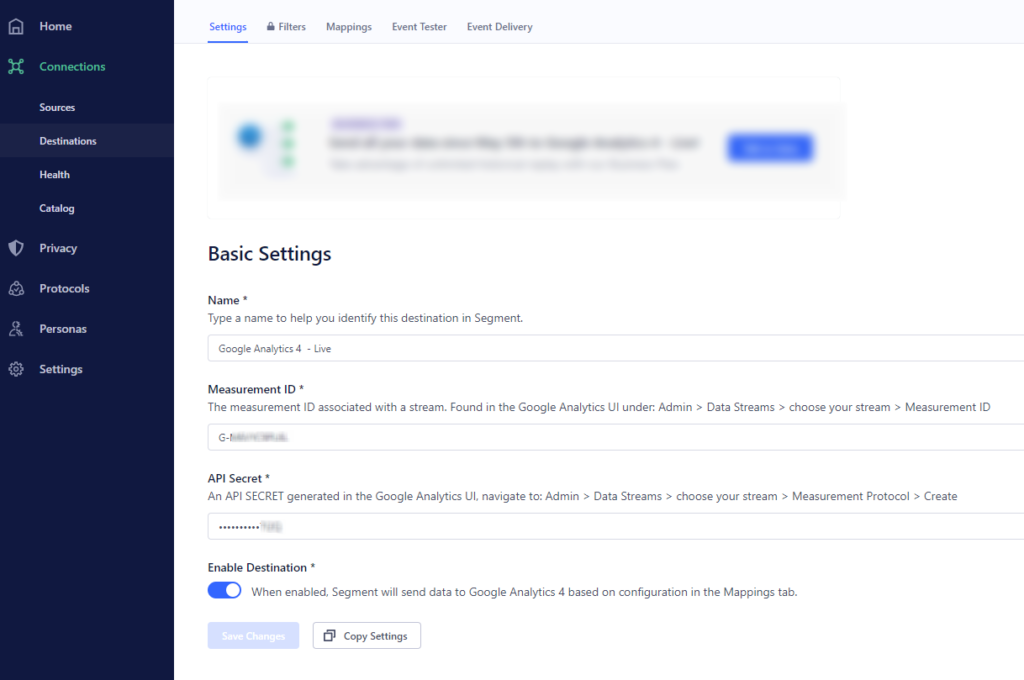
The configuration of traffic sources is more difficult and in specific cases (e.g. collecting data from a website) requires the developer’s support. In such a case, it is necessary to create the so-called data layer (dataLayer), which will be read by Segment script added to the code of the page. The concept is identical to that of dataLayer for Google Tag Manager. Keeping a specific naming and structure of the transferred data allows Segment to automatically retrieve and then transform the downloaded data. It is worth adding here that, unlike GTM, Segment does not allow you to run scripts of external tools that are not connected destinations.
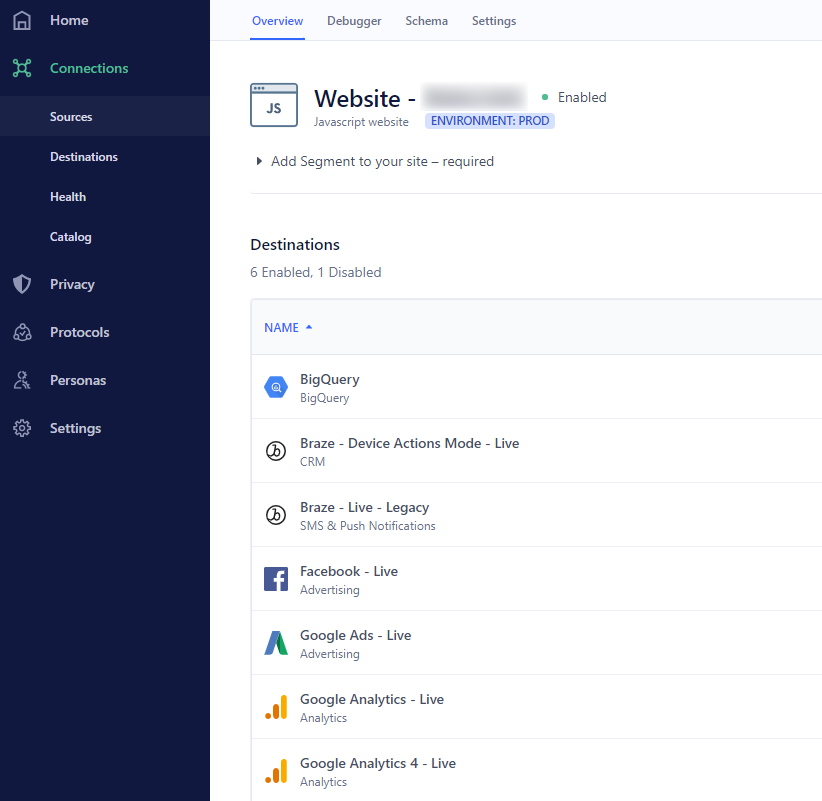
The recommended approach in the case of creating a dataLayer website is to create and then maintain documentation of what and when is transferred to Segment (the so-called Tracking Plan).
In the case of sources that require a direct connection to the server (server side – e.g. a database), it is necessary to provide connection keys and create dedicated views / tables from which the data will be downloaded by Segment. An alternative solution is to use a reverse ETL tool like Hightouch to transfer data from the database to Segment. Therefore, this connection requires, regardless of the technology used, knowledge of the SQL language to prepare the data.

For most of the other sources, configuration takes place in the Segment panel.
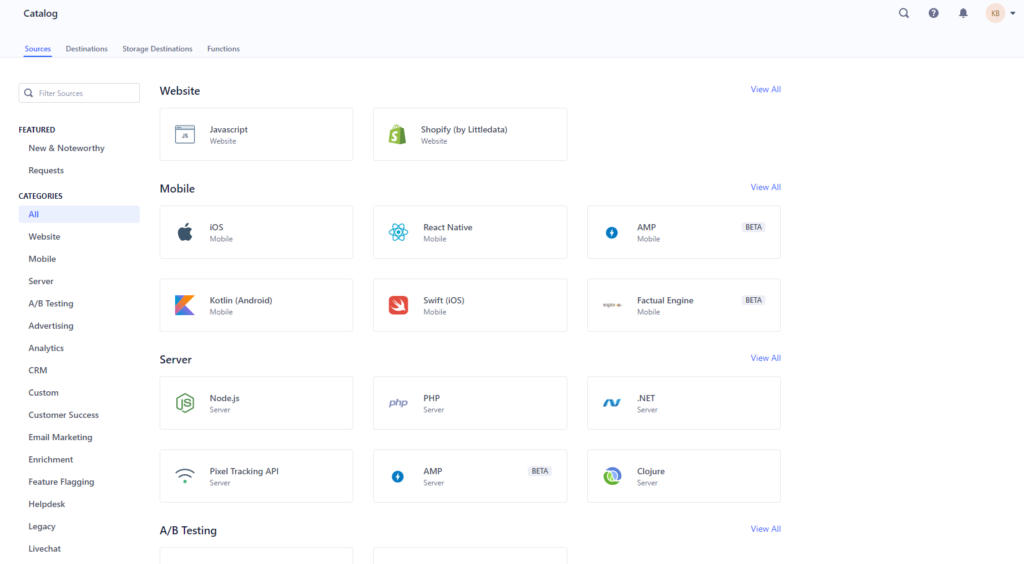
Practical applications
Segment is most suitable for businesses that use a large number of tools and / or have limited development resources. Below we present our 3 basic applications in practice.
1. Marketing
The ability to measure and target ads on marketing platforms such as Google Ads, Facebook Ads, TikTok Ads, Snapchat Ads and Twitter Ads is constantly increasing. However, in order to be able to use them, it is necessary to carry out and then maintain the correct configuration of events and variables sent. This often requires changes to the website code, Google Tag Manager or the marketing platforms themselves. However, this configuration only works unidirectionally. Events registered on the website are sent to marketing platforms. Information from one platform almost never ends up in another. Therefore, for example, building a remarketing list based on an event registered in the CRM system (communication with the customer – e.g. opening a text message) and using it in remarketing on Facebook is beyond the reach of most e-commerce businesses.
In addition, changes in order statuses taking place offline, without specialized configuration of data transfer via API of each of the marketing platforms used, are invisible to marketing. For example, the fact of paying for an order on delivery or returning the order is usually not recorded, which distorts the reported results.
Thanks to Segment, it is possible to send data on events and users between marketing platforms as well as from the sales database. All this makes it possible to use all the opportunities offered by marketing platforms without the above-average support from the development team.
2. Communication with the client
Effective communication with the customer is a key element in building customer satisfaction and loyalty. The basic scope of such communication concerns information about the placed order, changes in its status, delivery or generation of a VAT invoice. However, even such a limited scope requires the configuration of the CRM tool (e.g. Braze, Klaviyo, Intercom, Salesforce) and automated messages. These are often long-term development projects. If you want to expand such communication later, e.g. with abandoned baskets, it is necessary to re-engage the development team, verify the code, etc.
Here comes Segment. By configuring the database – Segment – CRM system connection, it is possible to provide the necessary information for a specific automatic action without the participation of the IT team.
3. Data backup
All data recorded by Segment, after prior configuration of the connection, is saved in the data warehouse. Thanks to this, it is possible to reuse them later. For example, the contact data of users who opened the newsletter, downloaded from the warehouse, can be uploaded as a custom audience to Facebook Ads for the purpose of their subsequent monetization.
Segment and Google Tag Manager
The implementation of event tracking through Segment most often replaces the need to maintain an extensive configuration in Google Tag Manager. The tools that Segment connects to (full list: https://segment.com/catalog/ ) are managed from the Segment panel. Tools that are not included on this list however, can be managed via Google Tag Manager as before.
Customer Data Platform tools, and in particular Segment, make working with user / customer data much more flexible. Thanks to them, acquiring or communicating with clients does not require the involvement of IT resources, which are always insufficient nowadays.
If you have questions related to the topics covered in this article, write to us!
Kamil is a digital marketing expert with 9+ years of experience in campaign management and web tracking. – ex-iProspect I ex-Marketing Wizards. Global Winner of Google Online Marketing Challenge 2012. Great fan of football, snowaboarding and cycling. You can follow him on LinkedIn.
- Written by: Kamil Borkowski
- Posted on: 21/06/2022
- Tags: e-Commerce, Segment, Tools

